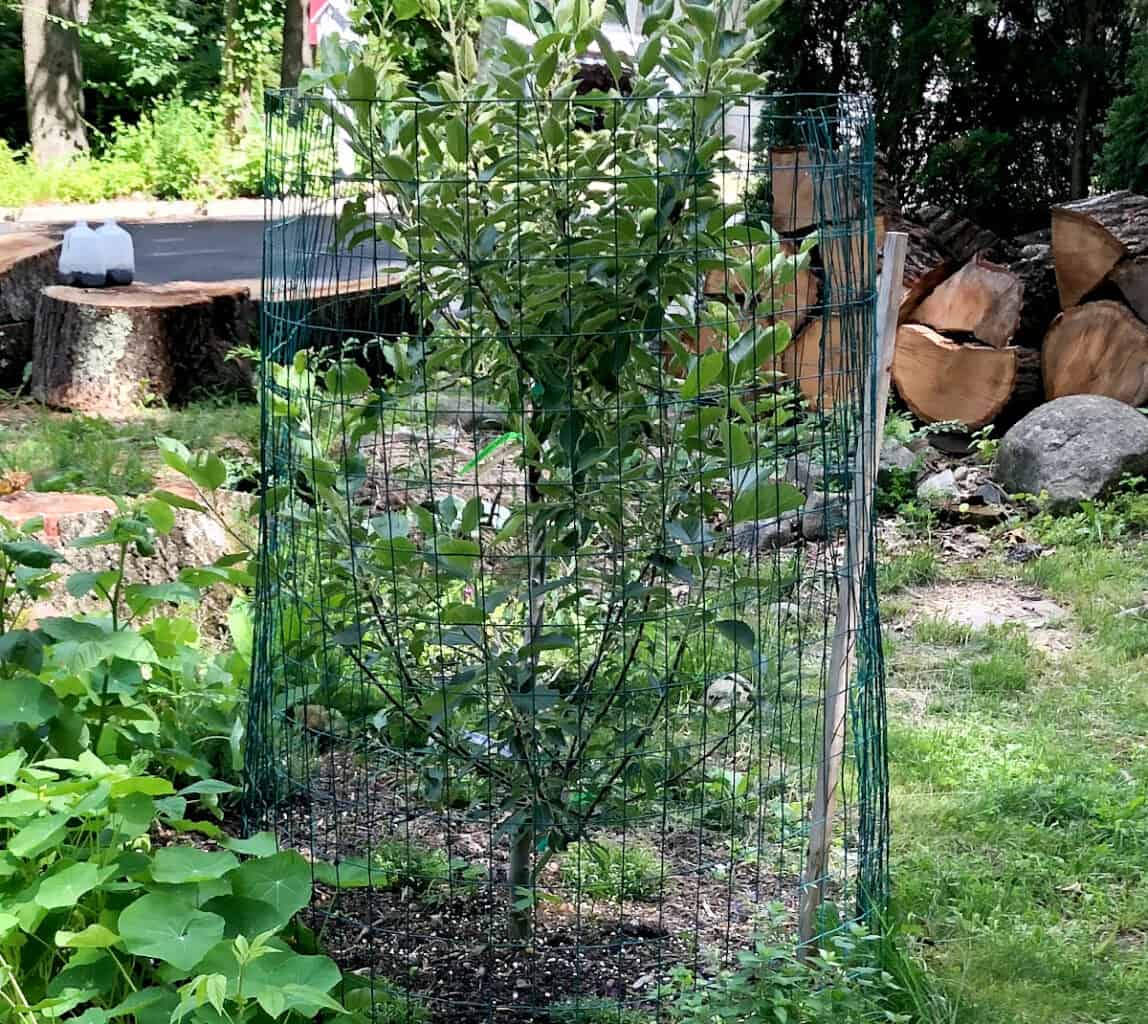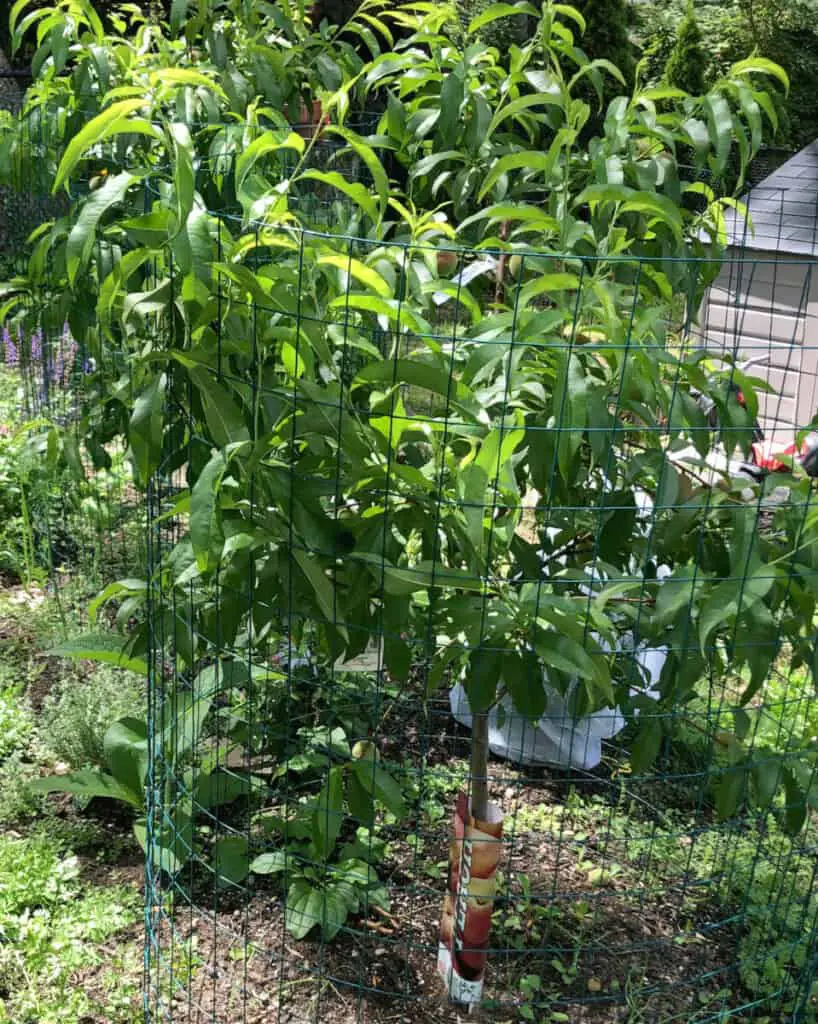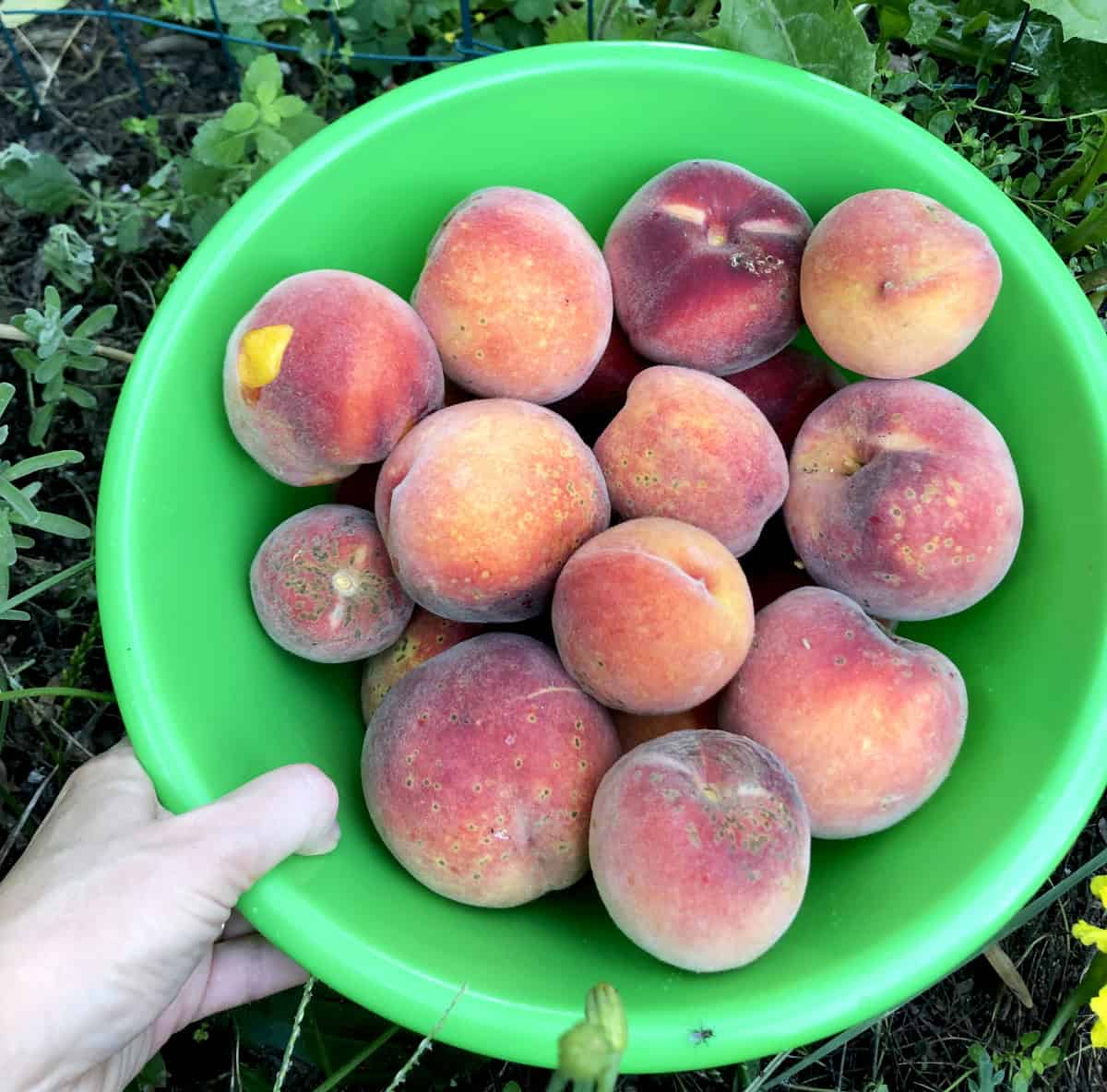Select a good fruit tree by considering
- Your hardiness zone
- Chill hours
- Tree size
- Tree spacing (have enough space above the ground and under)
- Disease resistance
- Fruiting
- Pollination
- Fruiting times

How to choose the right tree for my hardiness zone
When selecting a fruit tree consider what hardiness, also called growing zones your growing space is. Hardiness zones help to select the right tree with the ability to withstand the coldest and hottest weather temperatures in your area and thrive. Select trees that can grow in your hardiness zone. Each tree is marked with its hardiness zone. See if your hardiness zone number falls in the hardiness zone range of the tree. If you choose a tree that does not tolerate the hot or cold temperatures in your zone, the tree will be killed either by the frost or by the hot temperatures.
How to choose a tree with the right chill hours
Chill hours mean how many hours between 32-45F the tree needs in order to start to bud, grow, and fruit. When the tree that requires a certain number of chill hours does not get enough chill hours, the flower buds might not open at all or might open unevenly. The fruit trees vary in their range of chill hours. When choosing a fruit tree, make sure that your area gest the required number of chill hours for that specific tree. For example, if the tree requires only 300 hours of chill time, but your area has about 500 hours, the tree might bloom before the chill hours in your area are over and the flowering tree might become damaged by frost. This is also the reason why northern states grow more apples than peaches, and why southern states grow peaches.

What size of fruit tree to buy
Specific rootstock determines the size of the tree when it is mature. In general, fruit trees come in three sizes, a dwarf size, a semi-dwarf size, and a standard size.
Dwarf size trees are grafted into a dwarf rootstock. They grow up to be anywhere between 8’-10’ tall. They are suitable for smaller spaces and can be grown in containers. They should be planted about 5-7 feet apart. Because dwarf trees are relatively small, they are easy to maintain and harvest.
Semi-dwarf trees grow to be about 12’-15’ tall when they mature. Because they are larger than dwarf trees, they produce almost twice the amount of fruit as dwarf trees. This size is very suitable for most backyards. They can be planted about 10-15 feet apart.
Standard-size trees can reach anywhere between 12-25 feet in height, depending on what fruit tree it is. Peaches are smaller than apple, pear, and plum trees. They take longer to fruit but once they are established, they produce in large quantities. They are not as easy to maintain and harvest as one will need a ladder to do so.
How to space fruit trees
Provide the fruit tree with enough space needed underground and underground for the expected mature size of the tree. Consider what rootstock size your tree is and what size it should reach maturity. Space the tree with enough space below and above the ground and add about 3-5 feet for the walkways.
If you only have pots and containers to grow your fruit trees in, then you should get a dwarf tree suitable for the containers. If you have a large space and can grow a larger tree then consider a semi-dwarf or a standard tree size.
Before planting the tree, consider if it will have enough space to grow healthy roots. Consider if the space you choose to plant a fruit tree is not in a way of pipelines, septic, well, home’s foundation, and such. C
Consider before you plant the tree if there is enough space above the ground for the tree to grow and mature. Consider the power lines, utility lines, crossing neighbor’s property line, and such. Look around and know the size of the mature tree, then consider if the space is suitable to accommodate the size of the mature tree.
Should I get disease resistant tree?
Choose a tree that is disease resistant for best production and lower maintenance requirements. Remember that certain regions might be more prone to certain tree diseases than other areas. Always choose a disease-resistant tree against the disease prone to your specific area.
For example, I live in a zone, which is humid with lots of rain, which might lead to fungal diseases. Therefore, to me, it is crucial to choose a tree that is resistant to diseases related to my area.
How much fruit will my fruit tree produce?
Consider how much fruit you want to harvest, then choose a tree with the right rootstock, or consider the number of trees you need to get the amount of the harvest you want. Dwarf trees produce smaller amounts of fruit while standard-size trees produce the largest amount of fruit. Consider how you will process once the fruit is ready to be harvested. It is possible to have all the fruit come in at once or to spread the harvest and thus process the fruit at different times. If you want the fruit, to come at different times, choose the varieties that bear at different times, like earlier varieties paired with late fruiting varieties.

Dwarf rootstocks usually bear fruit earlier than semi-dwarf and standard ones.
How many trees do I need for pollination?
Fruit trees with a core and sweet cherries require pollination and you need two or more of the same trees for fruit to set. Pollination occurs when the trees blossom and the pollen is transferred from the male bloom to the female bloom. Most stone fruit and tart cherry are self-fertile and can bear fruit without another tree around. However, their yield increase when planted with another compatible fruit tree. When buying a fruit tree with a pollinator tree, make sure the trees are compatible for pollination and bloom at the same time.
How do I know when my tree will fruit?
Precocity measures how early the tree will start to bear fruit from the time the tree is planted. Dwarf trees bear fruit earlier than semi-dwarf and standard-size trees. For example, an apple tree on dwarf rootstock will bear fruit in 2-4 years, while a standard apple tree is expected to fruit in about 5-8 years. Another factor that influences how early the tree will bear fruit is the fruit cultivar. Cultivar is a plant that is produced and maintained by growers and does not produce true-to-seed. If you plant the seed of a cultivated apple, it will produce different kinds of apples, not resembling the kind you planted.
I have several fruit trees in my garden. As you might know, the best time to plant a tree was yesterday. The second-best time to plant them is now! Do not delay and plant a tree this growing season. One regret I have is that I have not planted fruit trees and bushes earlier. It is said that the first thing to do when you start a garden or when you get a property is to plant trees. That is so true! I cannot stress that enough!
What is great, however, is that you can buy time! But it reflects on the cost of the tree. The more mature the tree the higher the price. I plant fruit trees a few years after I started my garden. I started my garden a few years after I got the property. Everything got delayed. So I decided to buy more mature trees to buy some time. I bought two peach trees in my local garden center and they to my surprise bore peaches the same year, just about 6 months after I planted them! I cannot even express how surprised and happy I was. My apple tree bore about two apples and the cherry tree was too young to bloom. Since then with every year we get more and more excited about what tree will bear and how much.
Just get some trees, if it is one you can afford, then get the one. I would strongly encourage you to get a tree that fruits early so you get encouraged and pumped up and inspired to get more.
This year, I am not getting fruit trees, but fruit bushes like blackberries and raspberries instead. They are more affordable and bear fruit sooner and in large amounts. Plus they bear fruit for prolonged times during the growing season and that excites me.
If you can’t get the trees, then get the bushes. You will be glad you did. Look at it this way, years pass by fast and what seems to you like a long time to wait for the tree to fruit will pass by in no time. Then you will look back and say: I can’t believe these many years have passed. It seems like I planted the tree just yesterday. Don’t we say that about our children as well? Seems like yesterday you gave them birth.
READ HERE How to pick a healthy tree

